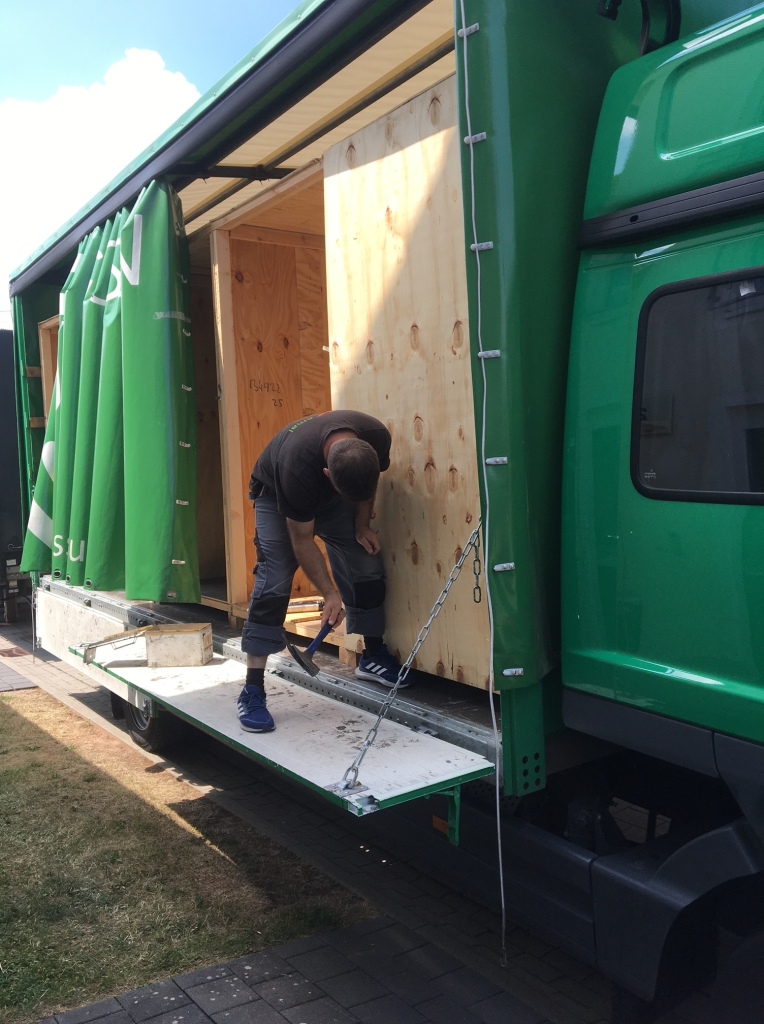Three weeks ago I got an e-mail from an old friend, telling me to expect a box in the mail. He didn’t provide any details. He just said “I’m sending you a box of goodies.”

I do a lot of model and parts swapping with other guys, so much so that getting a box of swapped goodies a month is a regular thing. But this box was different. It wasn’t a box of cut-up decals or leftover resin parts, or somebody’s leftovers. This box included two beautifully finished HO scale models, with a note that said “These models are a blessing from Bill Welch”. Wow.

The car above is a Sunshine ATSF GA-49 gondola. I’d never seen one before I opened the box. It’s an awesome car and it immediately became one of my favorite models. Below is another Sunshine car, this one a rarity–an N&W G-1 low-side gondola.

In the 15 or so years I ran St. Louis RPM, I learned that our hobby is full of very, very generous people. People who are generous with their time, and their hard work, and their money. People willing to share everything they’ve got. I was humbled then, and I’m again humbled today. These models are indeed a blessing.
Here is another new model received at about the same time, below. This is one of the new Rapido UTLX X-3 8,000-gal tank cars. It is gorgeous. I’m working on it this week, adding placards, new trucks, and a few more things to really sweeten it up. Well done, Rapido!
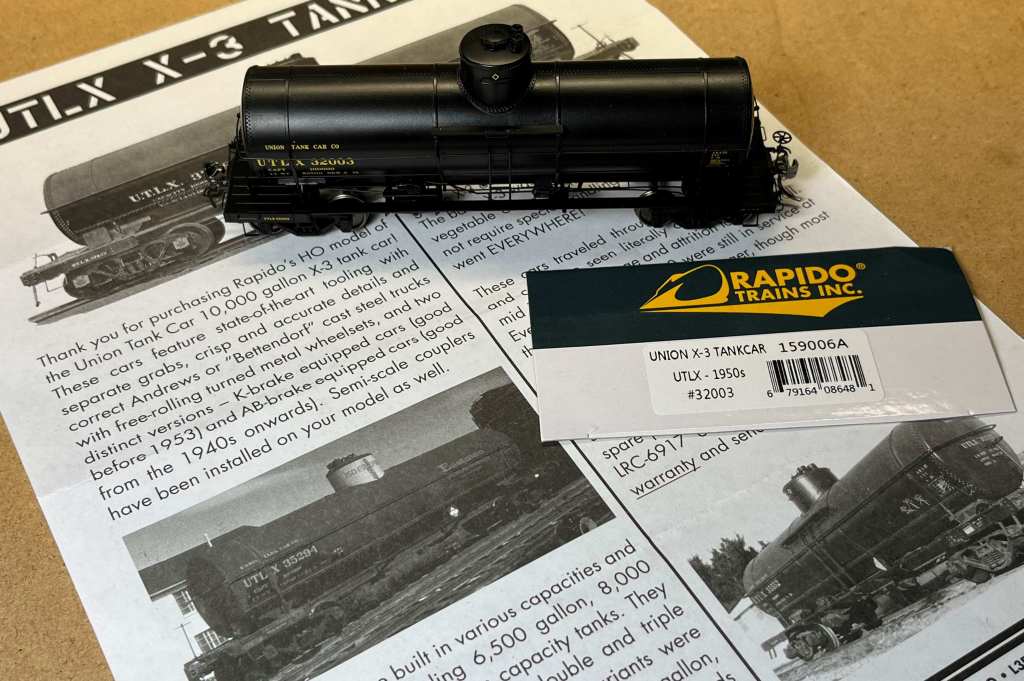
Our old friend Richard Hendrickson campaigned for a high-quality, injection-molded model of the X-3 for decades. If he were around today, I think he’d be well-pleased with this model.
MoPac How Truss Box Car
I wrote last fall that I was working on about 14 new HO scale models. Most of them are still in various stages of completion; this one–a Sunshine MoPac single-sheathed box car–was finally finished in March. Here’s the story.
According to Ed Hawkins, Missouri Pacific rostered over 4,000 1924-design Howe-truss single-sheathed box cars. I like single-sheathed cars, and given those high fleet numbers I feel that I can justify one on my railroad. I bought this old kit from my friend Tim O’Connor last year and built the car last fall and finished paint and weathering right about the time I received the other models mentioned above.
Below. There’s nothin’ like opening up a box of Sunshine Models goodness!
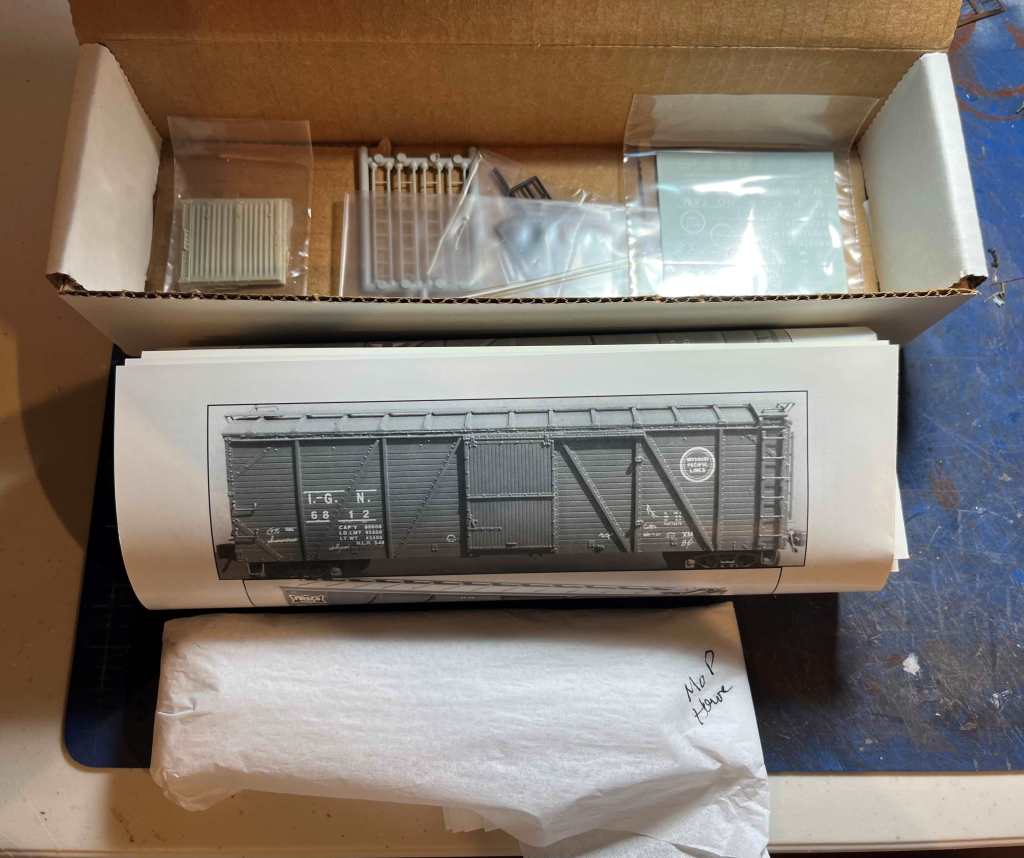
Here’s the prototype car. This is a Joe Collias photo from the early 1950s. Classic MoPac. The Sunshine car is a perfect replica.

Below. I began the build with the underframe, since that’s my least favorite stage of assembly. Below, I’ve followed the instructions and placed the valve and reservoir based on prototype photos included with the kit. I prefer to use Cal Scale brake gear but didn’t have the entire set on hand, and had to use a Tichy reservoir instead.

I connected the chain to the clevis at the cylinder piston using a short, .0125-inch piece of u-shaped wire. That allowed me to make an easy connection to the piston. Credit for that technique goes to Jerry Hamsmith.

Below. Here’s a photo of the completed underframe. I forgot to photograph it during assembly; here’s a view after the car was completed. This view also shows that I used Kadee #178 coupler boxes on the model, and Tahoe 40-ton trucks, and Hi Tech air hoses with brass brackets. It also appears that I used two different brands of “Code 88” wheelsets–see how the truck on the left has wheelsets polished to silver, and the one of the right has wheelsets polished to some other color??
You can also see that I tested using an artist’s pencil on the bottom of the weathered underframe. The lighter boards are where I tested a dark red pencil before I used it to weather around the rest of the model.

The superstructure was finished next. First I sanded the sides and ends the same height and length, to make sure the model makes a perfect box, and then added ladders, grabs and sill steps on the car sides. The roof has a running board made from Evergreen styrene, although I used the lateral running boards that originally came with the model. The A end was simple to finish–just ladders, a few grabs and a tack board and that was about it.

The last assembly completed was the B end. I finished the model per the instructions and used the prototype photo included in the instructions as an additional guide. The ladders are old Details West parts included int he kit. The air line attachment is a brass Hi-Tech details part. The sill steps are by A-Line, and the running board supports are by Yarmouth. It was a straightforward build; fairly easy since attaching a “stemwinder” brake wheel usually goes a lot faster than a power brake housing.

When construction was complete I sandblasted the model in my North Coast sandblast booth, and after I washed it and set it aside to dry, I painted it with Tru Color MoPac Freight Car Red.
I applied the kit-supplied decals in my usual manner, using Microscale Micro-Sol during application, and once dry using Walthers Solvaset to snuggle the decals around the details.
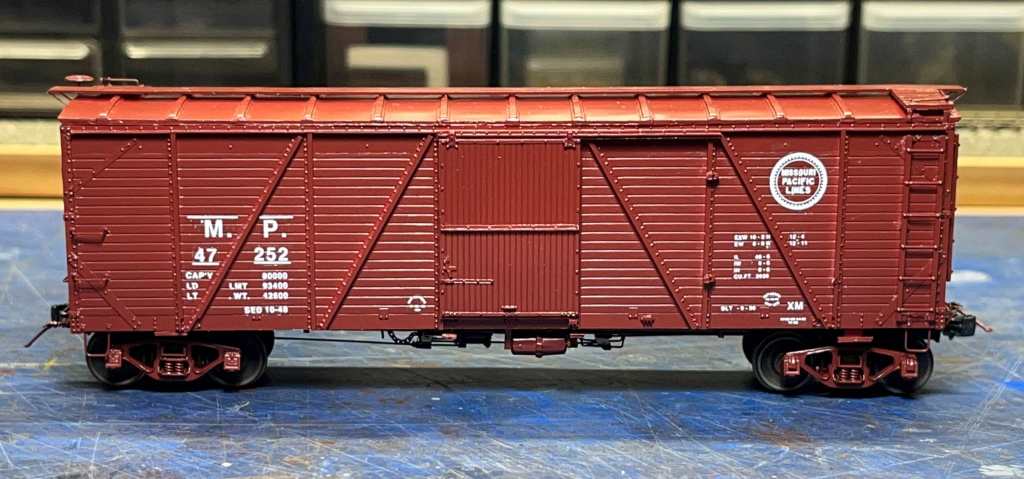
After a few applications of Walthers Solvaset to make sure the decals settled nicely, I sealed the finish with two coats of a mix of 50% Testors Dullcote, 25% Testors Glosscote and 25% paint thinner to set the decals.
Once the Dullcote was dry, I mixed a solution of black artist’s oil paint and paint thinner and dribbled it on each surface of the car (roof, sides, ends, and trucks) and allowed that to dry. That solution, which I’ve described frequently on this site, allows the black paint to settled in around the details and between the side sheathing boards, creating a dirty, well-used appearance. I also added a little more black weathering on the roof, this time carefully brushing on some AIM “Soot” weathering powder. Finally I colored some of the boards with a dark red, almost maroon artist’s pencil I mentioned earlier to highlight some of the sheathing boards. Then I sealed everything with one more shot of the Dullcote mix.

The last step was fixing the completed, weathered underframe to the superstructure. After a quick re-check on operating quality (coupler height, truck swivel, no wheel binds, etc.) the model was declared ready for service. This was a very enjoyable build and this one is definitely a keeper.

Looks like I need to untangle that chain!
Meanwhile, progress on the new Hermitage Road layout is progressing nicely. This week I finished a new version of the Alcatraz Paint and Varnish Co., using a Walthers locomotive shop kit. Here’s the model, and I’ll explain how I did it in a later post.
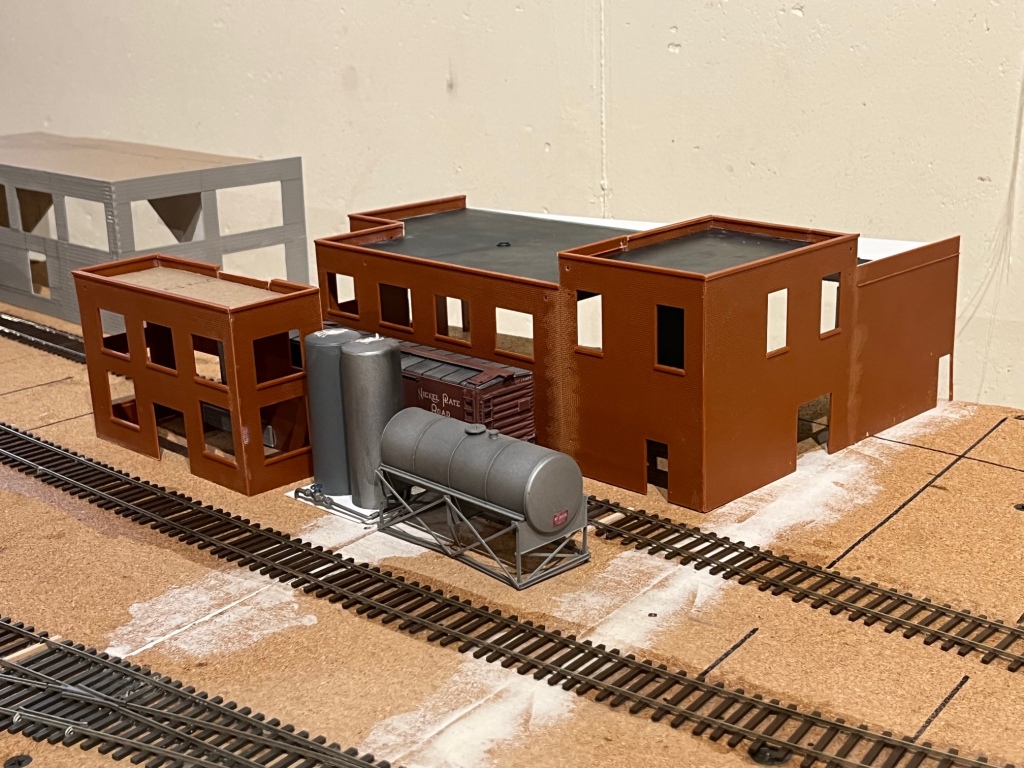
Hope you all enjoy your weekend. – John G


























































































































